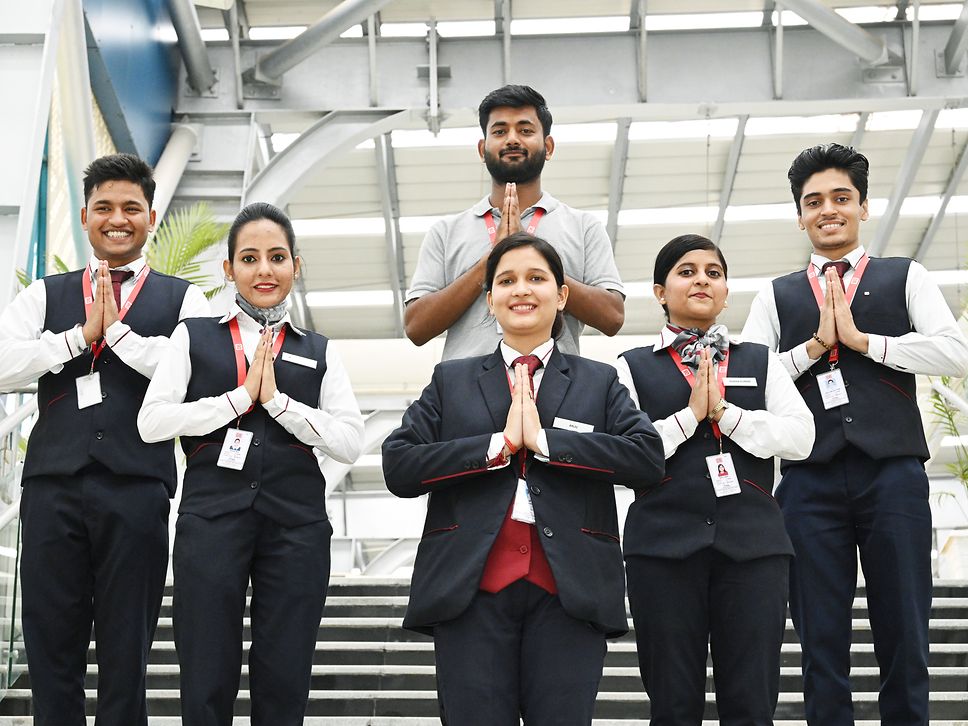Article: DB subsidiary starts operations on India’s first regional rapid transit system
Prime Minister of India Narendra Modi flags off the priority section of the first RRTS corridor in Delhi-National Capital Region • DB International Operations responsible for operations and maintenance • Knowledge transfer for state-of-the-art technologies ahead of their introduction in Germany
The priority section of India’s first Regional Rapid Transit System (RRTS) corridor was commissioned today in Delhi-National Capital Region. The Hon’ble Prime Minister of India, Narendra Modi, flagged off the first modern regional trains that entered service on the 17-kilometer long priority section between Sahibabad in Ghaziabad City and Duhai, driven by Indian employees of Deutsche Bahn subsidiary DB International Operations (DB IO).
The RRTS network being built by the National Capital Region Transport Corporation (NCRTC) will cover 82 kilometers and include 25 stations and two depots connecting Delhi, Ghaziabad, and Meerut once it is fully commissioned by 2025. The service, branded as RAPIDX, is designed to carry around 800,000 passengers a day at full capacity – a similar number to Hamburg's S-Bahn. The travel speed of the trains is 160 kmph, thereby becoming fastest regional rail system in India. The country is investing around four billion dollars in the project, which is primarily aimed at commuters traveling between the three major cities, each with populations of over one million.
DB International Operations was awarded a 12-year contract for rail operations and maintenance in July 2022, with a further five years option. Following the signing, DB RRTS Operations India Private Limited was established as the operating company for the project. Since then, the company has been training drivers and station staff, organizing the depots and drawing up schedules. It has gradually made the trains, stations, and other facilities ready for operation.
"We are working here in one of the largest urban areas in the world. India has an enormous task ahead of it in promoting sustainable urban development. We are therefore proud of our team of experts, who have made it possible to get the first part of the new rail network successfully up and running so quickly. This is a great opportunity to create an Indo-German partnership for green urban mobility. There is also a lot we can learn about the state-of-the-art technologies in this project ahead of their imminent introduction in Germany," said Niko Warbanoff, CEO of DB E.C.O. Group, of which DB IO is part.
"It is a much-awaited moment for the people of India. Team NCRTC has been working persistently for the past 4 years, to make this transformative system a reality. The inauguration of this flagship project by Hon’ble Prime Minister of India, will begin a new chapter for the rail-based transportation system in our country. Along with our operation partner DB RRTS India, we are committed to set a new benchmark in providing quality services to our commuters." added Vinay Kumar Singh, Managing Director of NCRTC.
"We are thrilled for the successful launch of the 17 km priority section of the Delhi-Meerut corridor and excited to commence the operations of this prestigious project with DB’s state-of-the-art technologies and best-in-class rail practices. We look forward to continuing our efforts towards providing a world-class transit experience for our passengers," said Kumar Keshav, CEO of DB RRTS.
The new regional rapid transit system will be equipped with state-of-the-art technology, including the ETCS (European Train Control System) Level 2/Hybrid Level 3 train control system and automatic train operation. This technology, which uses LTE (Long-Term Evolution) communication, will also be deployed in Germany in the future. The Indian project therefore also promises to bring major benefits for the German rail system through the transfer of technology and knowledge.
DB IO specializes in operating and maintaining rail transport systems and is responsible for DB's international operator projects outside Europe.
Note to editors
Photos of the project and start of services are available for download at DB Mediathek.
